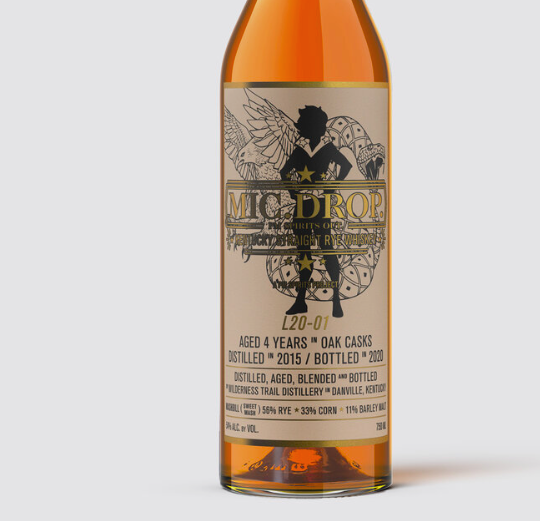The latest Mic.Drop release from PM Spirits isn’t a bourbon but a rye, another young gun at 4 years old, sourced from Wilderness Trail Distillery in Danville, Kentucky. Mic.Drop L20-01, which was released late last year, is drawn from just 5 casks of rye distilled in 2015 and bottled in 2020, made from a mash of 56% rye, 33% corn, and 11% barley malt. This is purportedly the first time Wilderness Trail has ever sold barrels of aged whiskey to anyone instead of bottling it themselves.
Well, let’s try it out.
Hearty on the nose, the whiskey has the classic punch of rye, all spice and pepper and dried fruits, impregnated with cedar wood and notes of dill. The palate is quite sweet but also impressively spiced, the notes of green herbs and fresh-cut cedar wood punching with some force. Then comes more of the fruit: Apple fritters in sweet cream. A splash of water does some good, tempering the heat and bringing out more of the barrel influence, including a gentle chocolate note that emerges on the finish. Hints of vanilla and brown sugar calm some of the unruly rye spice notes up top, letting the young but expressive rye do its thing with more of a sense of balance.
In the final analysis, it’s really fun stuff. Tough to justify at nearly $100 a bottle, though, but I presume you can convince yourself through whatever logic you need.
108 proof.
A-
https/wwwdrinkhackercom/2021/05/07/review-mic-drop-rye-l20-01-4-years-old




